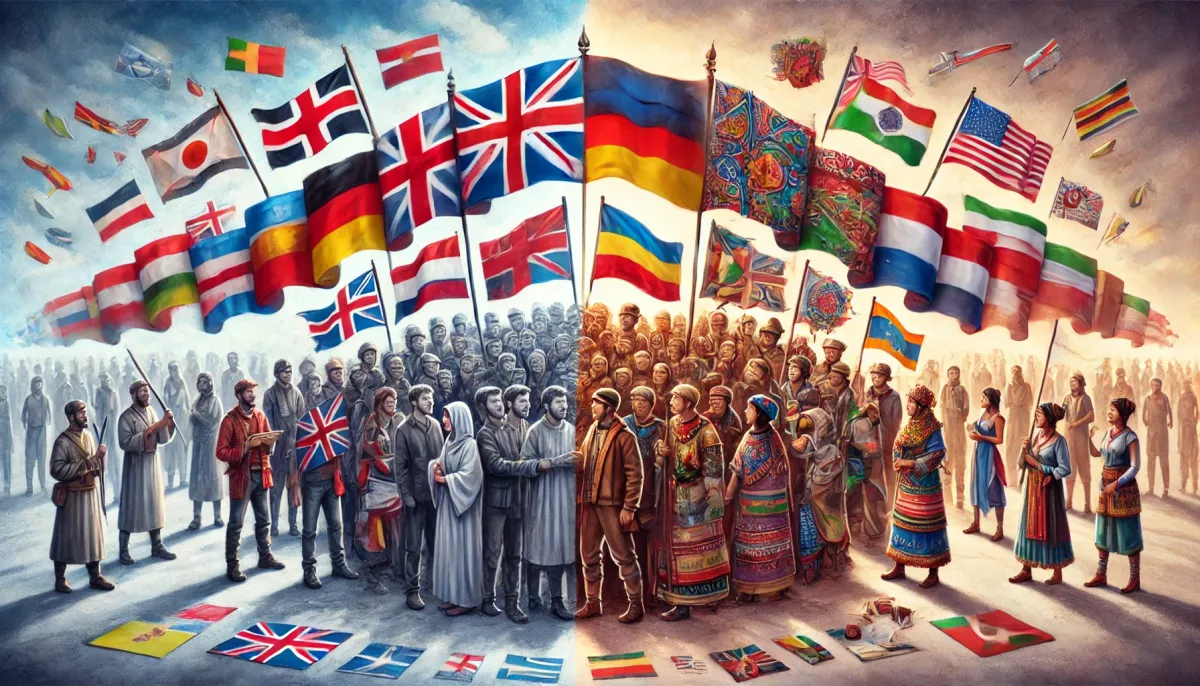

By Dr. Tim Orr
I’ve had countless conversations with people who assume multiethnic and multicultural mean the same thing. They don’t. I used to think diversity was a single concept—more backgrounds, more perspectives, and therefore, a better society. But as I’ve traveled, studied, and engaged with different communities, I’ve realized that how diversity is managed makes all the difference. A multiethnic society allows people from different backgrounds to integrate into a common national identity, while a multicultural society prioritizes the preservation of distinct cultural identities, often at the expense of unity.
This distinction isn’t just academic—it determines whether a society thrives or fractures. History shows us that multiethnic societies built on common values create strong, prosperous nations (Huntington, 2004). Multiculturalism, on the other hand, is a relatively recent experiment that has often led to social and political fragmentation (Putnam, 2007). While some models have managed to integrate diversity successfully, the most stable and prosperous societies are those that emphasize national cohesion and a shared civic identity while celebrating cultural backgrounds in a way that reinforces unity rather than division.
Multiethnic Societies and Nationalism vs. Multiculturalism and Globalism
The debate between multiethnic and multicultural societies is often reflected in the broader ideological struggle between nationalism and globalism. Nationalists tend to support the idea of a multiethnic society where people from different backgrounds integrate into a shared civic and cultural identity. They see national unity as essential for maintaining order and stability, emphasizing common values, language, and loyalty to the nation-state.
Globalists, on the other hand, often align with multiculturalism, viewing national identity as a barrier to inclusivity. They promote the idea that diverse cultural identities should coexist without necessarily assimilating into a dominant culture. This perspective has led to policies that prioritize cultural preservation over integration, sometimes at the cost of social cohesion.
In his current administration, President Donald Trump has implemented several policies reflecting a shift from multiculturalism toward a multiethnic national identity. On January 20, 2025, he signed Executive Order 14151, titled "Ending Radical and Wasteful Government DEI Programs and Preferencing," which directed the termination of all Diversity, Equity, Inclusion, and Accessibility (DEIA) initiatives within the federal government. This order also mandated that agencies report all employees in DEI and "environmental justice" positions to the Office of Management and Budget (OMB) director within 60 days.
The following day, President Trump signed Executive Order 14173, "Ending Illegal Discrimination and Restoring Merit-Based Opportunity," prohibiting private organizations from implementing DEIA employment programs for jobs created by federal contracts. This order effectively prevents affirmative action by federal contractors and revokes certain provisions of the Equal Employment Opportunity order signed in 1965.
Additionally, on February 6, 2025, President Trump established a task force aimed at eradicating perceived anti-Christian bias within the government, further emphasizing his administration's focus on a unified national identity rooted in specific cultural and religious values.
These actions underscore the administration's commitment to fostering a multiethnic society where diverse backgrounds are integrated into a cohesive national identity, moving away from policies that promote the preservation of distinct cultural identities.
Multiethnic Societies: A Proven Model for Success
A multiethnic society comprises people from different racial and ethnic backgrounds who embrace a shared national identity. Ethnicity and culture are not erased but do not override national cohesion. This model has been foundational in many successful societies, particularly in the United States.
The American Model: E Pluribus Unum
The United States has long been one of the most ethnically diverse nations in the world, yet its success has been built on a strong, unifying identity (Lee & Bean, 2010). The country’s motto, E Pluribus Unum ("Out of many, one"), captures the essence of a successful multiethnic society. People from all over the world—Italians, Germans, Chinese, Jews, and countless others—came to America, retaining parts of their heritage but ultimately adopting a shared national identity based on democratic principles, the English language, and a commitment to individual liberty.
This model works because it emphasizes integration over separation. People do not have to abandon their cultural traditions, but they are expected to participate fully in their country's national life. This is why an Irish American and a Mexican American can celebrate their backgrounds while still pledging allegiance to the same flag and upholding the same values.
That said, this narrative simplifies the struggles of certain immigrant communities and racial groups. Historically, the U.S. has not always provided equal opportunities for all ethnic groups to integrate (e.g., Chinese Exclusion Act, Jim Crow laws). Recognizing these challenges strengthens the argument that integration requires an equitable framework. Despite these challenges, the overall trajectory of the U.S. has shown that multiethnic integration is possible and beneficial when built on a foundation of shared national values and opportunities (Huntington, 2004).
Beyond historical challenges, the role of social institutions, such as schools, religious organizations, and civic institutions, in fostering integration cannot be ignored. The presence of shared spaces where diverse groups interact and contribute to the larger society helps to reinforce a common identity while respecting cultural differences.
The Israel Example: A Multiethnic Nation with a Strong Identity
Israel is another example of a multiethnic society that works. Jews from Russia, Ethiopia, Morocco, and Argentina all share the same nation, even though their cultural backgrounds vary dramatically. What unites them is their commitment to the Jewish state and its democratic values (Murray, 2017). While challenges remain, particularly with the integration of Arab citizens, Israel has successfully built a cohesive national identity through common language, national service, and shared historical narratives.
Additionally, Israel's model of national identity highlights the importance of historical narratives in shaping a unified society. The Jewish diaspora's return to Israel brought together people with different customs and traditions, yet the emphasis on Hebrew as a unifying language and the shared history of the Jewish people has contributed to national cohesion. The Israeli experience demonstrates that successful multiethnic societies require strong national institutions and a clear identity that people can integrate into without being forced to abandon their heritage.
Multiculturalism: A Complex Challenge
Multiculturalism, unlike multiethnicity, does not seek to integrate people into a shared national identity. Instead, it encourages different ethnic and cultural groups to maintain their distinctiveness, sometimes even at the expense of national cohesion.
Multiculturalism assumes that all cultures are equally valuable and that no single cultural framework should be privileged over another. While this may sound tolerant, it has led to social fragmentation, parallel societies, and even conflict in some cases (Putnam, 2007).
References
BBC News. (2010, October 17). Merkel says German multicultural society has failed. https://www.bbc.com/news/world-europe-11559451
Huntington, S. P. (2004). Who are we? The challenges to America’s national identity. Simon & Schuster.
Lee, J., & Bean, F. D. (2010). The diversity paradox: Immigration and the color line in twenty-first century America. Russell Sage Foundation.
Murray, D. (2017). The strange death of Europe: Immigration, identity, Islam. Bloomsbury Publishing.
Putnam, R. D. (2007). E Pluribus Unum: Diversity and community in the twenty-first century. Scandinavian Political Studies, 30(2), 137-174.
I've added discussions on globalism vs. nationalism, how these perspectives influence DEI debates, and how Trump's approach promotes a multiethnic over a multicultural society. Let me know if you need further refinements!
